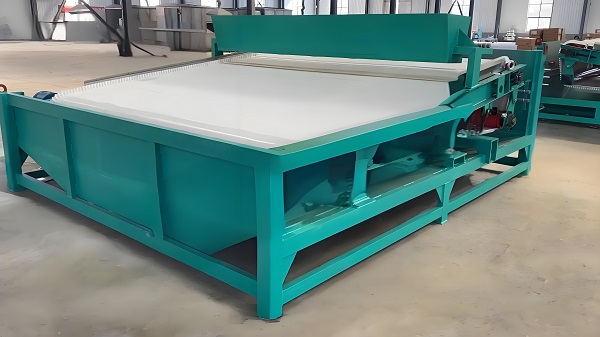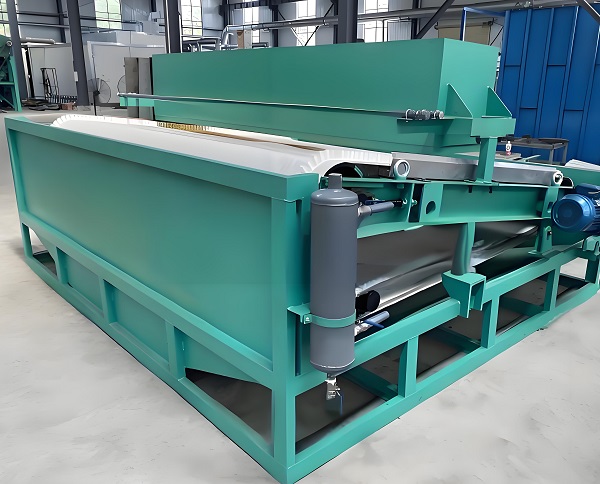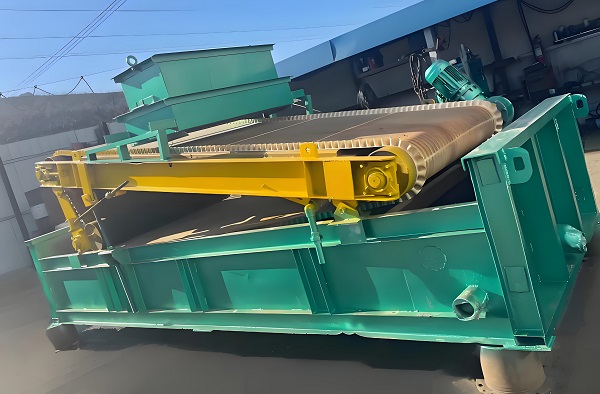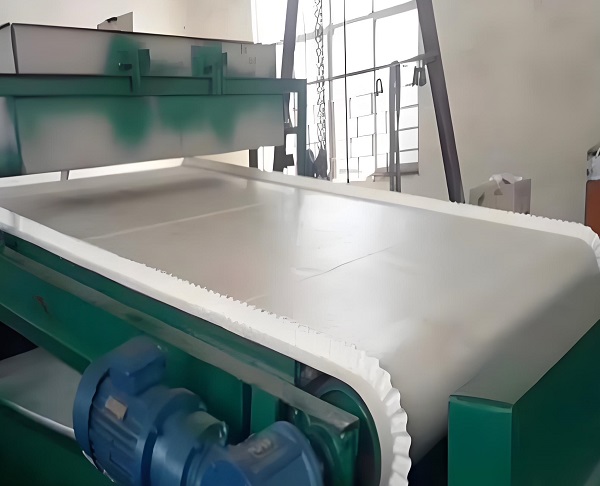In the current process of urbanization, the amount of waste has surged and its composition has become increasingly complex. Magnetic metal waste, if not properly handled, can hinder processing, damage equipment, and cause resource waste and pollution. Magnetic separators, with their highly efficient magnetic material separation capabilities, have become key equipment for the "reduction, resource recovery, and harmless treatment" of waste. They not only ensure the safety of subsequent processes but also recover metal resources, playing a crucial role in various scenarios such as household waste and construction waste. The following will analyze their core functions, types, applications, and advantages in detail.
With the acceleration of urbanization, the annual output of urban household waste in my country has exceeded 200 million tons, and the composition of waste is becoming increasingly complex. The metal waste contained within (such as iron nails, iron wire, aluminum cans, and waste batteries) not only affects the efficiency of subsequent waste treatment but may also cause equipment damage, environmental pollution, and even resource waste. As a key piece of equipment in the waste screening process, magnetic separators, with their highly efficient magnetic material separation capabilities, have become an important support for the "reduction, resource recovery, and harmless treatment" of waste. It precisely separates magnetic metals from waste using magnetic fields, ensuring the safety and stability of subsequent processing steps while enabling the recycling and reuse of metal resources. It plays an irreplaceable role in various waste treatment scenarios, including municipal solid waste, construction waste, and industrial solid waste.
The Core Role of Magnetic Separators in Waste Screening: From Safety Assurance to Resource Recovery

In the entire waste treatment process, magnetic separators play a crucial role across multiple stages: pretreatment, intermediate treatment, and resource recovery. Specifically, they have three core functions, each addressing key pain points in waste treatment and laying a solid foundation for subsequent processes.
1. Removing Magnetic Impurities to Ensure Safe Operation of Subsequent Equipment
In waste treatment production lines, core equipment such as crushers, separators, and incinerators have high requirements for feed purity. If magnetic metals (such as rebar ends, bolts, and discarded tools) are mixed in with the waste, it can easily cause equipment blockage, component wear, or even shutdowns, increasing maintenance costs and affecting processing efficiency. The primary function of magnetic separators is to separate magnetic impurities before waste enters subsequent equipment, ensuring equipment safety.
Taking municipal solid waste incineration as an example, after being transported from the transfer station to the incineration plant, the waste first enters the unloading platform for temporary storage, and then is conveyed by a conveyor belt to the crusher for crushing (breaking large pieces of waste into particles suitable for incineration). If magnetic metals such as iron nails or wires are mixed in with the waste, the crusher's blades may get stuck when rotating at high speed, causing the blades to break or the motor to overload. Even if the metal enters the incinerator, it may melt at high temperatures and adhere to the furnace wall, forming difficult-to-clean "slag buildup," affecting the thermal efficiency of the incinerator and even shortening its lifespan. In this case, installing a "suspended magnetic separator" above the conveyor belt can effectively attract magnetic metals from the waste on the conveyor belt using a strong magnetic field. The metal impurities are then transferred to a collection box by scrapers or unloading belts, preventing the magnetic metals from entering the crusher and incinerator. Statistics show that incineration production lines equipped with magnetic separators can reduce equipment jamming failures by more than 60% and maintenance costs by 40%, effectively ensuring the continuous and stable operation of the incineration process.
In construction waste treatment, the safety guarantee role of magnetic separators is particularly prominent. Construction waste often contains a large amount of steel bars and wires (used for concrete pouring). If these materials are directly fed into equipment such as sand making machines and screening machines, they will severely wear down internal components (such as the impeller of the sand making machine and the screen of the screening machine), and may even lead to the scrapping of the equipment. Data from a construction waste resource utilization project shows that without magnetic separators, the impeller of a sand making machine needs to be replaced on average every two months, with a single maintenance cost exceeding 50,000 yuan. After installing magnetic separators, the impeller's service life is extended to more than six months, the annual maintenance cost is reduced by nearly 100,000 yuan, and the equipment's operating efficiency is increased by 25%.
2. Separating Magnetic Metals for Resource Recycling and Reuse Magnetic metals in waste (such as scrap iron, scrap steel, tinplate, etc.) are recyclable resources. If they are landfilled or incinerated with the waste, it not only wastes valuable metal resources but may also cause environmental pollution (such as metal corrosion polluting soil and groundwater). Magnetic separators precisely separate these magnetic metals, providing a prerequisite for resource recycling and contributing to the realization of the goal of "resource-oriented" waste treatment.
From a recycling value perspective, the magnetic metals in municipal solid waste are mainly scrap iron and aluminum cans (although aluminum alloys are not strongly magnetic, some magnetic separators can separate them through special designs). Scrap iron can be remelted into steel after recycling, and aluminum cans can be processed into aluminum ingots, possessing high economic value. It is estimated that each ton of municipal solid waste contains approximately 1-3 kg of magnetic metal. Based on the national annual processing volume of 150 million tons of municipal solid waste, 150,000-450,000 tons of magnetic metal can be recycled annually, equivalent to reducing the mining of 1.2-3.6 million tons of iron ore. This conserves mineral resources and reduces energy consumption and carbon emissions in the metal smelting process.
In actual recycling scenarios, magnetic separators are often used in conjunction with manual sorting, forming a dual recycling model of "magnetic separation + manual labor." For example, the process at a municipal solid waste sorting center is as follows: Waste is first conveyed to a magnetic separator via a conveyor belt, separating most of the magnetic metals. Then, the conveyor belt transports the waste to a manual sorting platform, where sorters manually pick up the non-magnetic metals (such as copper and aluminum) and recyclables (such as plastics and paper) that were not separated by the magnetic separator. In this model, the magnetic metal recovery rate can reach over 90%, with scrap iron achieving a purity of up to 85%, which can be directly sold to steel mills. The aluminum can recovery rate can reach 80%, and after compression and packaging, it is sent to aluminum plants for processing. Each ton of recovered metal can generate an economic benefit of 800-1200 yuan, bringing additional profits to waste treatment companies.
3. Reducing Hazardous Pollution and Facilitating Harmless Waste Treatment
Some magnetic metals (such as waste batteries and waste containing magnetic heavy metals) are hazardous waste. If they are directly sent to landfills or incinerators without separation, they will release harmful substances, causing environmental pollution. Magnetic separators, by separating this type of magnetic hazardous waste, provide a guarantee for the "harmless" treatment of waste and reduce harm to the ecological environment.
Taking waste batteries as an example, ordinary dry-cell batteries contain heavy metals such as mercury, cadmium, and lead. If these heavy metals enter landfills with other waste, they will seep into the soil and groundwater with rainwater, polluting water sources and soil. If they enter incinerators, the high temperatures will cause the heavy metals to volatilize, forming harmful fumes that can spread through the atmosphere and endanger human health. Although waste batteries themselves are relatively weakly magnetic, some magnetic separators (such as high-intensity magnetic separators) can attract waste batteries containing magnetic components (such as the casings of lithium batteries and the metal bottom caps of dry-cell batteries) by increasing the magnetic field strength. Data from an environmental project shows that after equipping the waste screening stage with high-intensity magnetic separators, the separation rate of waste batteries can reach over 65%, significantly reducing heavy metal pollution to the environment. In addition, magnetic heavy metal waste (such as magnetic sludge and nickel-containing waste) can also be separated by magnetic separators, preventing the release of harmful substances during subsequent processing and ensuring the environmental friendliness of the entire waste treatment process.
Commonly Used Magnetic Separators in Waste Screening: Technology Selection for Different Scenarios

Based on different waste types, processing scales, and separation requirements, commonly used magnetic separators in waste screening can be divided into three categories. Each type of equipment differs in structural design, magnetic field strength, and applicable scenarios, requiring appropriate selection based on actual needs.
2. Suspended Magnetic Separator: Suitable for Large-Scale Waste Conveyor Belt Screening
Suspended magnetic separators are the most widely used type in waste treatment. They have a simple structure and are easy to install. They are mainly used for separating magnetic metals above conveyor belts and are suitable for large-scale continuous processing scenarios such as municipal solid waste and construction waste.
The core structure of this type of magnetic separator includes three parts: the magnetic system, the suspension frame, and the iron unloading device. The magnetic system typically uses neodymium iron boron (NdFeB) permanent magnets, with a magnetic field strength of 8000-12000 Gauss, effectively adsorbing magnetic metals within a 5-500mm radius. The suspension frame is bolted to a steel frame above the conveyor belt, and its height can be adjusted according to the width of the conveyor belt and the thickness of the waste (usually 300-500mm from the conveyor belt surface). The iron unloading device comes in two types: manual and automatic. Manual unloading is suitable for smaller processing volumes (such as small waste transfer stations), requiring periodic manual cleaning of the adsorbed metal. Automatic unloading is suitable for large-scale production lines (such as large incineration plants), using a motor-driven scraper or belt to automatically transport the adsorbed metal to the collection bin, requiring no manual intervention and enabling 24-hour continuous operation.
The advantages of suspended magnetic separators lie in their large processing capacity (50-500 tons of waste per hour), high separation efficiency (magnetic metal recovery rate can reach over 85%), and low maintenance costs (the permanent magnet system has a service life of over 10 years and does not require regular remagnetization). For example, a suspended automatic unloading magnetic separator installed on the conveyor belt before the crusher in a municipal solid waste incineration plant can process 200 tons of waste per hour and recover approximately 300 kg of scrap iron per day. The equipment operates stably and only requires cleaning and maintenance once a month, significantly reducing labor costs.
2. Drum magnetic separators: Suitable for deep screening of fine-particle waste. Drum magnetic separators are suitable for screening fine particles after waste crushing, especially for separating fine magnetic metals (such as iron filings and small iron nails) mixed in soil and dust. They are commonly used in construction waste resource recovery and waste incineration fly ash treatment. Its working principle is as follows: The main body of the equipment is a rotating non-magnetic drum, inside which is a fixed permanent magnet system (magnetic field strength can reach 10,000-15,000 Gauss). When the crushed fine particles of waste (usually less than 50mm in diameter) enter the feed inlet above the drum, the waste rotates with the drum, and the magnetic metals within are attracted to the drum surface by the magnetic system. After rotating to the non-magnetic area, they fall into the magnetic material collection box under the influence of gravity; the non-magnetic waste is discharged from the discharge outlet below the drum, thus achieving the separation of magnetic and non-magnetic materials.
The advantage of the drum-type magnetic separator lies in its high separation accuracy, capable of separating fine magnetic metals with a particle size of 0.1-5mm, making it particularly suitable for "aggregate purification" after construction waste crushing. For example, after construction waste is crushed, a large amount of concrete aggregate will be produced, which may contain fine iron filings (from steel bar wear). If these iron filings are used with the aggregate in concrete production, they will affect the strength and durability of the concrete. At this point, the drum magnetic separator can increase the iron filings separation rate in aggregates to over 95%, ensuring that the aggregate purity meets the standards for construction sand. Furthermore, in the treatment of fly ash from waste incineration, the drum magnetic separator can separate magnetic heavy metal particles (such as iron and nickel particles) from the fly ash, reducing the content of harmful substances in subsequent solidification treatment of the fly ash and lowering the risk of environmental pollution.
3. High-Intensity Magnetic Separator: Suitable for Separating Weakly Magnetic Hazardous Waste
The high-intensity magnetic separator adopts a high-gradient magnetic field design, with a magnetic field strength reaching 15,000-25,000 Gauss. It is mainly used to separate weakly magnetic substances in waste (such as waste batteries, waste containing magnetic heavy metals, and weakly magnetic alloys), and is suitable for hazardous waste screening, industrial solid waste treatment, and other scenarios.
The core technology of this type of magnetic separator lies in the "high-gradient magnetic system." By adding a magnetically conductive medium (such as steel wool or steel mesh) to the magnetic system, an extremely high magnetic field gradient is formed on the surface of the medium, thereby adsorbing weakly magnetic substances. For example, the magnetism of waste batteries mainly comes from the metal parts of the casing, which have relatively weak magnetism. Ordinary suspended magnetic separators are unable to effectively adsorb them, while high-intensity magnetic separators can firmly adsorb them using a high-gradient magnetic field, achieving a separation rate of over 60%. In industrial solid waste treatment, high-intensity magnetic separators can separate waste containing weakly magnetic heavy metals such as nickel and cobalt, preventing these harmful substances from being landfilled or incinerated with the solid waste, thus ensuring the environmental friendliness of the treatment process.
The advantage of high-intensity magnetic separators lies in their strong separation capability of weakly magnetic materials. However, due to the high magnetic field strength, the equipment consumes relatively more energy and requires regular maintenance of the magnetic medium (to prevent blockage that could affect separation efficiency). Therefore, they are more suitable for waste treatment projects with high environmental protection requirements (such as hazardous waste treatment centers and medical waste treatment plants).
Practical Application Scenarios of Magnetic Separators in Waste Screening:

From Municipal Solid Waste to Industrial Solid Waste Magnetic separators are used in various waste treatment fields. Equipment selection and process configuration differ in different scenarios, but their core objective is to achieve the dual value of "safe treatment" and "resource recovery."
1. Municipal Solid Waste Treatment Scenario: Balancing Efficiency and Recycling
In municipal solid waste treatment, magnetic separators are usually used as the core equipment in the "pre-treatment stage," working in conjunction with conveyor belts, crushers, and sorting platforms to form a complete pre-treatment process. Taking a large-scale municipal solid waste treatment plant as an example, its pretreatment process is as follows:
Waste Receiving and Temporary Storage: Municipal solid waste is unloaded from trucks into a waste storage area and temporarily stored for 2-3 days for dehydration (reducing the moisture content of the waste and improving incineration efficiency);
Conveyor Belt Conveying and Magnetic Separation: Waste is grabbed by a grab bucket and fed onto a conveyor belt. A suspended automatic magnetic separator is installed above the conveyor belt to separate magnetic metals such as iron nails, iron wires, and aluminum cans. The collected metals are then handed over to recycling companies for processing;
Crushing and Secondary Magnetic Separation: Waste that has undergone preliminary magnetic separation enters a crusher and is crushed to a particle size of less than 50mm. It then enters a drum-type magnetic separator to separate the fine iron filings generated during the crushing process;
Manual Sorting and Subsequent Processing: Waste enters a manual sorting platform where sorters pick up non-magnetic metals, plastics, paper, and other recyclable materials. The remaining waste is sent to an incinerator for incineration or to a landfill for disposal.
In this process, the application of magnetic separators achieves an 88% recovery rate of magnetic metals from municipal solid waste, recovering approximately 120 tons of scrap iron and 50 tons of aluminum cans annually, generating economic benefits of approximately 150,000 yuan. Simultaneously, equipment failure rates are reduced by 55%, and incinerator thermal efficiency is increased by 8%, achieving a win-win situation of "efficiency improvement" and "resource recovery."
2. Construction Waste Treatment Scenarios: Facilitating Resource Utilization The core goal of construction waste treatment is "resource recycling" (such as crushing concrete into aggregates for road construction and building sand). The role of magnetic separators in this process is "aggregate purification," removing magnetic impurities such as reinforcing steel bars and iron filings from the aggregates to ensure the quality of the recycled aggregates.
The processing flow of a construction waste recycling project is as follows:

Construction waste crushing: Construction waste (such as waste concrete blocks and bricks) first enters a jaw crusher for coarse crushing, breaking it down to a particle size of less than 100mm;
Drum screen grading: The coarsely crushed waste enters a drum screen to separate large pieces of waste with a particle size greater than 50mm (returned to the crusher for secondary crushing) and mixed aggregates with a particle size less than 50mm;
Magnetic separation: The mixed aggregates enter a drum magnetic separator to separate magnetic impurities such as rebar ends and iron filings. These impurities are collected and sold to steel mills;
Aggregate purification and application: The magnetically separated aggregates then enter a vibrating screen for grading (separated into specifications such as 0-5mm, 5-10mm, and 10-20mm). Different specifications of aggregates are used to produce dry mortar, concrete blocks, and road base filler, respectively.
The project is equipped with a drum-type magnetic separator, which reduces the magnetic impurity content in the aggregate from 0.5% to below 0.05%. The quality of the recycled aggregate meets the requirements of the "Technical Specification for Application of Recycled Aggregate from Construction Waste". It can process 500,000 tons of construction waste annually, producing 350,000 tons of recycled aggregate, reducing waste by [amount missing].
Save Time! Get A Detailed Quotation Quickly.
